The Ultimate Guide to Living Green Walls
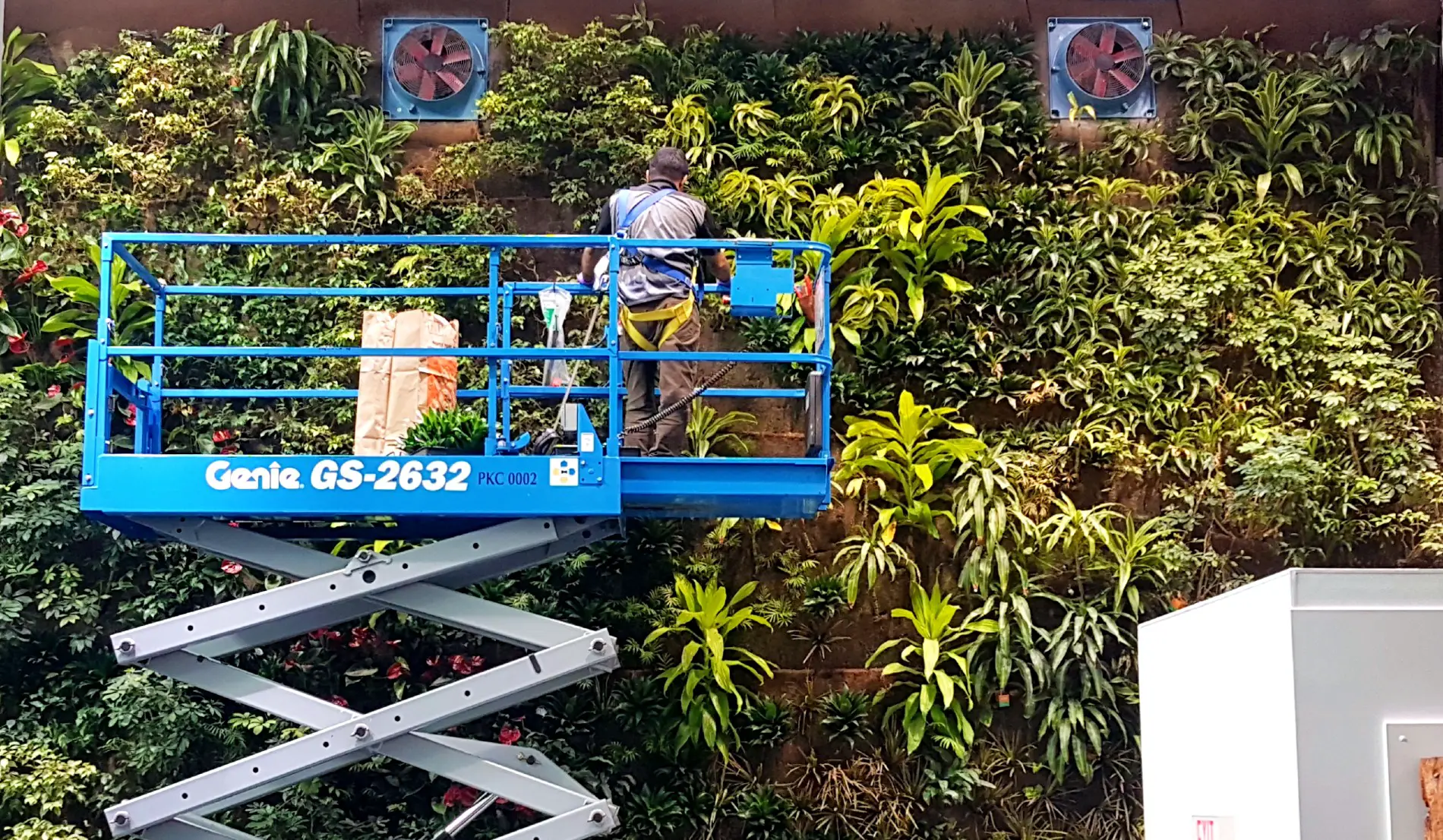
Whether you’re considering a state-of-the-art architectural masterpiece, or something on the smaller end of the spectrum, living walls can greatly improve a space. Living walls can be as simple or as complex are you can imagine. Explore this page to build a picture in your mind of where you want to take your living wall.
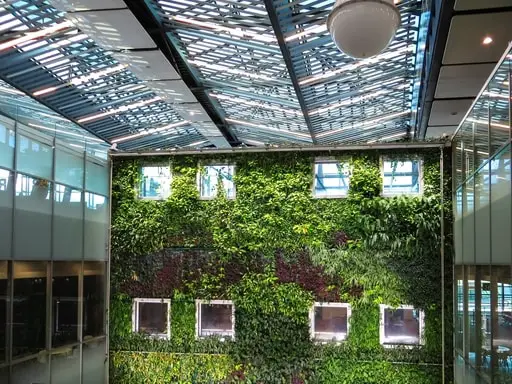 Types of Living Walls
Types of Living Walls
Living walls come in many forms and variations. What specifically is a living green wall? And what differentiates it from a vertical garden, a moss wall, a green façade, and a paludarium?
What is a living green wall?
A living green wall is a vertical surface that’s been designed to host living plants. The effect is a lush wall that’s covered in living, growing plants. The wall has its own growing medium which can be soil, hydroponic, or a combination. It can be hand-watered or include an irrigation system. Green wall and living wall are two names for the same thing. Living walls are commonly built inside as well as outdoors.
What is a vertical garden?
Vertical gardening can refer to a living green wall where the plants are edible. It is also collection of related techniques for making the most of limited gardening space by using vertical structures, supports, and soil placement. Vertical gardening can improve ventilation in your plants, reducing disease, and can make harvesting and watering easier. It can also allow you to garden in spaces that might otherwise be considered too small.
It can be a lot easier on your back too, you don’t need to bend over for the majority of the maintenance and harvesting. Yields can increase, and less exposed soil generally means less weeds too.
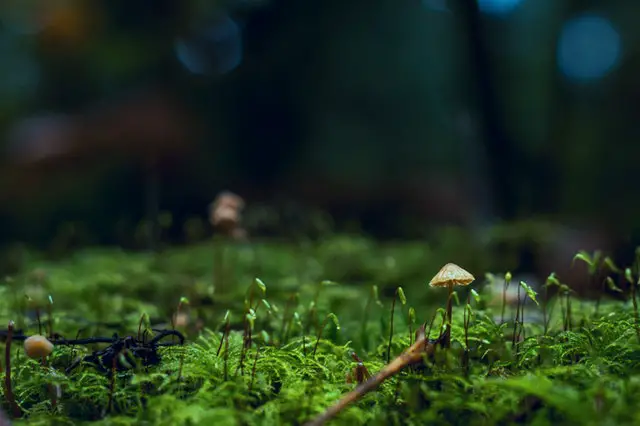 What is a moss wall?
What is a moss wall?
A moss wall can be an interior, or exterior. It’s a collection of moss plants arranged on a vertical wall. They can be either living or preserved (usually with glycerine). There are a lot of varieties of moss with different colors, textures, and sizes. Moss walls can also be combined with living plant walls to visually fill in between the plants. Living walls often aren’t planted at super high density so the plants have some room to grow. Moss is a great “background” in these cases. Moss requires very high humidity and dries out easily, so a lot of moss walls are preserved, or have some way of maintaining high humidity. Moss is commonly used in paludariums.
What is a green façade?
At first glance a green façade might look like a living plant wall, but there are differences. Green facades often refer to outdoor installations. A green façade has plants growing vertically, but they’re usually rooted in or near the ground. Green facades dramatically alter a building’s exterior and can cool and shade the building. Green facades may or may not require structural supports. In some cases the plants are able to grow up all on their own. A great example are old brick and stone buildings overgrown with ivy vines.
What is a paludarium?
A paludarium is a combination of a terrarium and an aquarium. It’s a type of vivarium that incorporates terrestrial and aquatic elements. At its simplest, it’s a half-full aquarium, with some aquatic or terrestrial plants growing in it (usually both). These can be homes to fish and other humidity loving creatures like lizards, amphibians, and insects.
Paludariums are often designed to mimic a specific natural biome, and are well suited for the native animals and insects that thrive there. With proper maintenance and lighting they can be very striking visually.
What is an edible plant wall?
Much like a vertical garden or a living wall, an edible plant wall is a method of growing plants vertically. Herbs, vegetables, and other edible plants can be grown on a vertical wall, where a growing medium or hydroponic system feeds the plants in their vertical orientation. The important thing is to give your plants the environment they need to thrive. In general, herbs like high humidity, and good air circulation. But, you can always find herbs that are more tolerant of dry conditions, but they’ll usually prefer more intense light.
Plant Selection

What are the best orchids for living green walls?
Orchids are a challenging plant to grow, but they’re beautiful when done right. Orchids are a stunning option for adding a pop of color to a living wall. Some of the best orchids for a living wall are: Oncidium (Dancing Lady), Dendrobium Berry Oda, Phalaenopsis (Moth orchids), Psychopsis (Butterfly orchid) and Cattleya orchids. Orchids require conditions that can be difficult to achieve in a living wall alongside varied tropical plants. Antheriums and Crotons are commonly used alternative accent plants. They are colorful and easy to grow.
Can I grow herbs in a living green wall?
Absolutely. A living green wall with herbs in it could be called a vertical garden. It’s a great way to get access to fresh herbs through the winter, or herbs that wouldn’t normally grow in your outdoor conditions. Most herbs can be grown in a vertical garden if you do it right. Different herbs will have different growing habits. Depending on light levels some might stretch. Basil, and sage are great to add texture and fullness, and grow closer to the wall. Leafy greens like swiss chard, lettuces, spinach, and kale can grow quickly and fill in your wall, just be sure to harvest before they get too big, or they can become bitter.
Can I grow succulents in a living wall?
If you have a good location with direct sun exposure or bright indirect light, consider a succulent living wall. A succulent wall contains well-draining, sandy or perlite filled soil that allows cacti and succulents to thrive. Succulents can have a lot of different colors and textures, so it’s easy to create visual interest. They don’t need a lot of maintenance, water infrequently, and make sure they get a lot of sunlight.
Can I grow moss in a living wall?
Moss is a great addition to any living wall (other than maybe a succulent wall). For living moss to thrive, it needs high humidity, and surprisingly, most mosses are tolerant of high or low light. It’s the drying out that gets them.
Can I grow tropical plants in a living wall?
The following photo shows some beautiful tropicals growing happily in a living wall

For indoor living walls, tropical plants are the staple. The huge variety, and lush leafy green textures are the go-to for filling out a living wall. Plants are available in a huge range of leaf sizes, textures, and colors, from lime green, to deep purple-black. Some of the most common living wall tropicals are: Epipremnum Aureum (Also called Golden Pothos, which are incredibly easy to propagate) , Philodendrons, Crotons, and Spider plants are all common.
Can I grow colorful plants in a living wall?
Colorful plants are a great way to add accents to a living wall. You can add orchids, or an easier to grow alternative. There are a lot options, including Crotons (colorful leaves), Antheriums (stunning red), and Peace lillies (White). There are many more, so most accent colors can be found. An important consideration is how often the plants bloom, and how long the flowers last. Longer last flowers are a great alternative, and so are colored leaves. Many plants have variegation and leaf coloring if the conditions are right.
Sustainability
Are green walls good for the environment?
Green walls have the potential for positive environmental impact.
Living green walls can promote biodiversity. When a building is first constructed the site is disturbed and biodiversity drops. The top soil may have been completely scraped away, all vegetation removed, habitat lost. An external living wall can create new habitat and promote biodiversity.
Through shading the façade, they can reduce energy use for cooling. The wall also evapotranspires, and can do this using rain water. All this means is that the plants give off water vapour through evaporation. This can further help manage stormwater if it’s captured and used to irrigate the wall.
Add plants without taking up a lot of space
Building footprint is proportional to energy and resource use. If there’s a way to incorporate plants into a building without increasing the footprint significantly it’s a win. Living plant walls can take up very little room, and have a long list of benefits.
 Can green walls make a building more sustainable?
Can green walls make a building more sustainable?
Buildings can make green walls more sustainable through a number of mechanisms. Through integrated pest management, living walls can reduce chemical and pesticide use.
Living walls can have a mediating influence on temperatures near and within buildings. The local heating of a building is sometimes called a heat island. Through reducing heat islands by evapo transpiration and shading, living walls can improve human and animal comfort and health.
Light pollution reduction can be achieved by using timers and designing the wall to reduce lights after-hours. Water efficient landscaping is a staple of most liivng walls designs. Through careful design, water can be conserved for the maximum benefit of the plants using the least water.
Energy efficiency helps reduce costs of walls, so it’s a major design concern. Lighting, irrigation pumps, fertilizing, and ventilation are designed to optimize energy efficiency.
Indoor environments in buildings require a certain amount of conditioning. Living walls can synergize with existing systems and provide a lot benefits that increase confort and air quality.
Do green walls qualify for LEED?
Green walls can help buildings qualify for the LEED (the Leadership in Energy and Environmental Design) program through a number of mechanisms. The system is internationally recognized.
Energy use and storm water use are some of the most important factors. Plants on the façade of the building can reduce heating and cooling requirements, reducing energy use. If a building is designed to handle rainwater and use it in place of city-water for watering a green wall, this can be a positive factor for LEED credits.
Improve a space
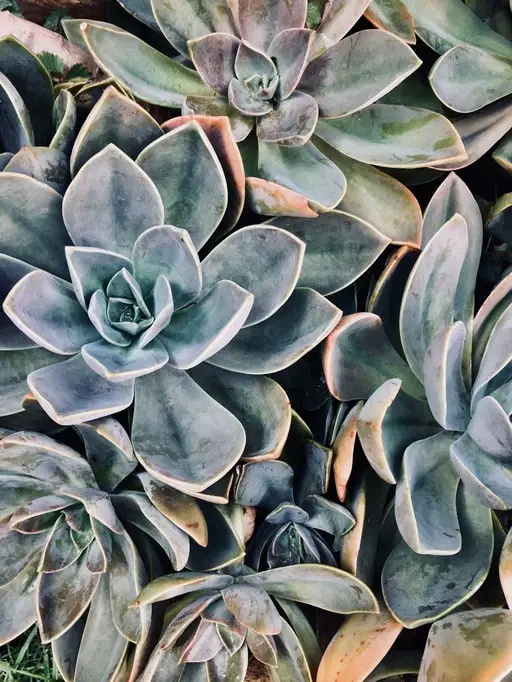 Visual Benefits
Visual Benefits
Living walls elevate a space. They’re visually stunning, and people connect with them on a primal level. Living walls create a focal point, and have a soothing and relaxing quality. They also improve productivity. Their visual qualities can also translate into marketing potential. Restaurants and other businesses that incorporate living walls can create instagrammable moments and shots. If people stop for a quick selfie, they’re volunteering their time towards your marketing. Nothing wrong with that!
Sound Benefits
Sound design is an under-rated aspect of building design in a lot of cases. The acoustics of a place, when they’re right are almost un-noticeable. You have a great conversation, maybe the music sounds great, and you just appreciate it. But when acoustics are poor, you notice.
Sound is the second most-common cause of complaints in restaurants. Luckily, plants can help.
Living wall foliage is great at mitigating higher frequencies. The structure, and soil or growing medium is great at reducing low frequencies. Together, acoustics are improved.
https://sourceable.net/green-walls-support-interior-acoustics/
Air Quality Benefits
There are a lot of studies that show that the increased oxygen, fresh scents, humidity, and air filtering qualities of living walls can be significant, and measurable. Certain plants are better than others for each factor, but as a whole, they’re responsible for renewing the air planet-wide, why would it be any different in a building?
Increased Productivity and Morale
You just have to look to Amazon installing 40,000 plants in one of its buildings, or Google making similar moves. If some of the world’s largest, most data-driven organizations are embracing plants in a big way, what do they know that we don’t? Surely it’s not all about the media buzz such mega-projects generate?
I’m not saying it’s not. But it could also be the huge productivity gains.
Do living green walls reduce volatile organic compounds (VOC’s)?
The answer to this depends on exactly the question you’re asking. Plants do reduce certain VOCs, but they dramatically increase others. Let’s assume the specific question is:
Can living walls significantly reduce the level of harmful VOCs in a building?
On the scale of a building’s interior, the change in VOCs is completely dominated by air exchange. So while plants will absorb and reduce a certain amount of VOCs, the amount that leave the building through air exchange are overwhelmingly larger.
There are a few studies floating around on this, a popular one is from NASA. If you actually read it, you’ll realize they’re interested in a VERY sealed environment. A space ship or station. In that situation, the tiniest reduction matters, and compounds over time, so plants can be effective.
But consider the case of a living wall in a building that has doors and windows. Because air exchange is engineered into the design of all modern homes and commercial buildings, plants aren’t going to make a measurable difference in most cases.
Construction and Costs
What do living green walls cost?
Are living green walls expensive? Living wall costs are a combination of engineering, installation, structural materials, soil, plants, watering systems, maintenance and watering. Costs average $149 per square foot but are highly variable, ranging between USD $70 and $260 per square foot. Size of the wall is a major factor in cost. The cost can increase if building alterations, plumbing, drainage, or electrical are required. It’s important however to look not just at costs, but benefits as well.
Improve property Values?
Living green walls can improve property values through a number of avenues. External green walls can create focal points that draw tourists and attention, increasing business. They can also help shade and cool the building, reducing property costs. Commercial building costs are usually related to the operating profit of the building, so if you can drive cooling costs down, value goes up. The increased interest in the building can create buzz and help draw investors. A growing segment of the investing community is looking to be associated with all things green, give them an easy in.
Another aspect is qualifying for LEED (Leadership in Energy and Environmental Design) credits. LEED is a program is designed to dramatically increase the sustainability of buildings through a points system. Points are awarded to encourage buildings to employ sustainable methods in the design, operation, and construction of the building.
What are green walls made of?
Green walls can be constructed from a lot of different materials but there are a few common setups.
Living walls all incorporate a number of common elements. Plants are inserted into a growing medium which could be soil or a hydroponic medium. The plant along with the growing medium is attached to a structure, which could be pre-existing, but is often added to bear the weight of the system.
If the system incorporates an irrigation system, the wall will have piping, pumps and nozzles to disperse the water among the plants. Interior walls have a waterproofing layer to protect the surrounding building from any water damage, especially for indoor walls.
Smaller vertical garden walls made for use outside are typically wooden or fabric. The fabric style are a grid of pouches that are sewn into a piece of fabric that is hung on an existing structure, often a fence or small wall.
Design
Can they be customized?
Living walls are almost custom as a rule. Part of the design process is selecting plants and a design that will work well with your unique site. All sites have unique elements that can shape your living wall design.
It’s important to work within the confines of the system, so it’s good to engage an expert to understand what’s possible. Most things are possible, but something has to give. It’s often a trade-off between budget, maintenance, plant selection, and size.
For exterior walls you can customize, but make sure to account for plant hardiness zones, unless you’re planning to replace all your plants every year.
Consider including your logo in your plant wall if it’s in a prominent location, like in a reception area. This can give you some easy marketing collateral every time someone takes a selfie.
How do I design a living green wall?
Designing a living wall is a set of logical steps. First, consider your potential locations. Will the spot have enough natural light, or more likely do you need to add some artificial lights? Natural light from windows and skylights are great options. Plants need the light to photosynthesize and grow. And some plants have brilliant colors but only if they have the right intensity of light. More available light opens up more potential plant species to choose from. For exterior walls you’ll be looking mostly at what hardiness zones they can survive.
Next it can be good to determine the size and style. Will it be freestanding? Wall mounted frame-style? Or will it be a full built-in living wall with irrigation and slightly more automation? It’s up to you.
Once you’ve got a site, and chosen a style or system, you get to select plants. Are you looking for that lush tropical green? Or maybe you want to do something completely local and hyper sustainable. Either way you have a lot of options. Choose plants that will do well within your lighting and temperatures, and locate them on the wall for the best micro climate. Bput the plants that prefer intense light where they’ll get it, and the same for shade.
Plant selection and irrigation system design will play into maintenance. It’s important to consider maintenance during the design phase. Be honest about what you’re willing to put into the wall monthly in time or budget.
Another great idea is to call up a few local companies, and tour a few walls in person. There’s nothing like seeing them in real life. There’s nothing wrong with starting with a design you know you like, and refining it from there.
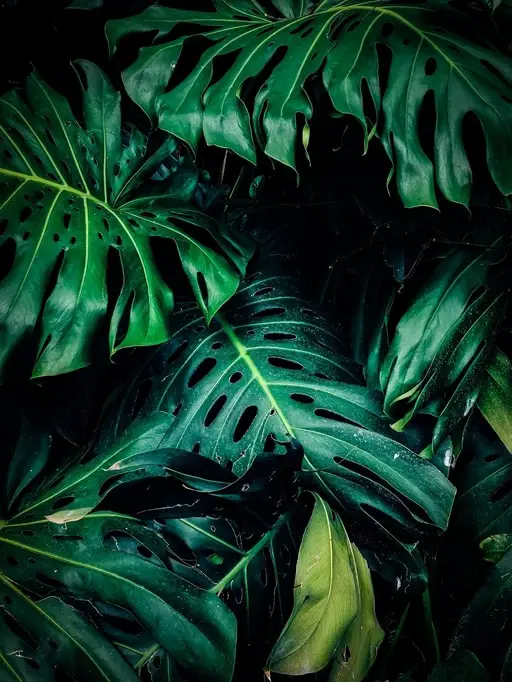 How can I add texture to a living wall?
How can I add texture to a living wall?
Textural variations are a great way to add visual interesting to a living wall. This can be accomplished by careful selection of plants. Depending on your climate, or indoor conditions, you’ll have a wide range of plants at your disposal to craft a wall design from.
To add depth, and give your wall a more natural feel: vary the textures. Different leaf sizes, habits (vining vs bushy or vertical growth). There are many options for adding texture. Another trick is to layer plants of different reach. Reach refers to how far from the wall a plant will tend to grow over time. Some plants will have low reach, 6 inches (15cm) or less, whereas some will extend for a few feet (0.5+ meters).
How much space does a living green wall take?
Green walls can take up very little space If that’s a prime concern. Generally they extend between a foot and two feet from a wall, along their length. Large more complicated systems will require some space for maintenance equipment.
Maintenance equipment can vary depending on the scale and accessibility of the wall. It can include the following:
- Scissor lift to access large walls (likely brought to site by the maintenance contractor), but in specific situations it may make sense to keep one in-house
- Ladders
- A water machine
- Hand tools
- Temporary storage for cuttings, dead plants, and debris
- Storage of fertilizers, pest control products, and spare parts.
Most contractors should be able to work within your space. Many will bring most of the above to your site when required.
How densely should plants be spaced?
Planting a new living wall is a trade-off between how it will look on day 1, and down the line. If you plant your wall to dense initially, the plants won’t have any room to grow. A great option can be to use a wall system where the “background” or cover on the growing medium is a neutral color that looks vegetative from a distance. This can be accomplished with different textured meshes, fabrics, and also with preserved moss.
Location
Choosing best location in your space
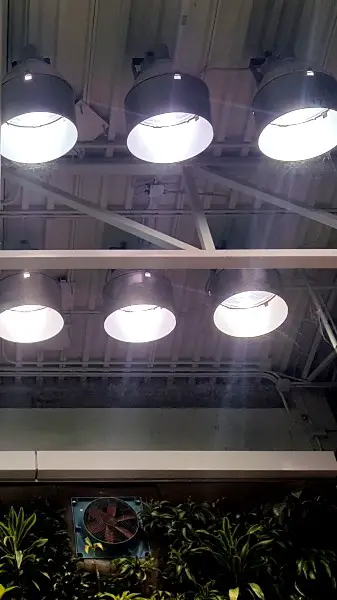 One of the prime concerns with a living wall is that it’s in a public area, accessible for the largest number of people to enjoy. It can set the tone, and makes a great first impression, so they’re popular in receptions and lobbies.
One of the prime concerns with a living wall is that it’s in a public area, accessible for the largest number of people to enjoy. It can set the tone, and makes a great first impression, so they’re popular in receptions and lobbies.
Another consideration for location is lighting. Even very bright indoor lighting can be 100x to 1000x weaker than direct sunlight, so bright lighting is important for giving plants what they need to thrive. Big windows, skylights, and artificial lighting are considerations.
Plumbing can also be a factor. If you’re retro-fitting a living wall into an existing space, consider the layout of plumbing for fresh water and drainage.
Can I install a living green wall in my Home?
Many people choose to install living walls in their homes. A good way to dip your toes is to go for a living wall frame style of wall. This is a self-contained wall, that functions much like a potted plant. You hang it on the wall, and water it manually.
It’s important to anchor these securely into studs or structure so the weight of wet soil and plants doesn’t come toppling down.
Some residences opt for a more permanent living wall. Using the same systems as for commercial installations, living walls can be installed in residential settings.
Can I install a living green wall in my Office?
Installing a living wall in your office can be a great way to increase comfort and productivity. There’s some good data. Large technology companies are embracing nature therapy in a big way by bringing plants into their offices on a huge scale. Check out this article to see why Amazon, a highly data-driven company, saw fit to install 40,000 plants at one of their location.
Can I build my own living green wall (DIY)?
Living walls can be as simple or as complex as you would like. It can be as simple as hanging a potted plant on the wall, or building a self-irrgating living wall that covers a lot of real estate. Depending on your goals and budget, and how much time you’re willing to invest in researching the process, anything is possible.
Can I build a living green wall inside?
Living walls can be built indoors or outside. For indoor walls a key consideration is containing moisture, and making sure the wall gets enough illumination. Living walls are becoming more and more common in restaurants, offices, and building lobbies. They’re also included in a lot of high end interior design applications in residences. There’s always a way to build a wall that fits your space.
Can I build a living green wall in my garden?
Garden living walls are a great fit. You can hang a living wall on a fence or wall. Or you can build something free standing. Vertical gardens are a great way to make the most of limited space without
Vertical gardens can have great ventilation that can reduce disease in fruits and vegetables. They can also make harvesting and watering easier.
Your back will thank you too! You don’t need to bend over for the majority of the maintenance and harvesting. Yields can increase, and less exposed soil generally means less weeds too.
Maintenance
How do you water a green wall?
Green walls generally have one of two types of irrigation system. Either recirculating, or direct irrigation. Depending on the size of the wall, there may be multiple systems or zones. Multiple zones can allow you to group plants with similar water needs, some plants prefer more water than others. A direct irrigation system uses a hookup to city water. This is typical of larger walls. The water may be conditioned for pH or hardness on the fly, or fertilizer may be added in small quantities. The water will flow using city pressure to the top of the wall. Gravity then drains the water to the bottom where it goes down a drain.
A recirculating irrigation system collects the water that’s flowing down the wall into a reservoir. It’s then pumped back up to the top of the reservoir on a timer, based on moisture sensors, or by remote control. The water then moves down the wall by gravity and is recirculated again. The water may be filtered for cleaner system operation.
Manual watering is typical of smaller living walls. Frame style wall-hung living walls use a simple water collecting system. Most have some type of drip tray or gutter that catches the water at the bottom. This can turn into a lot of work if your wall is much bigger than a large TV, especially indoors.
Are living walls difficult to maintain?
Living walls need maintenance just like landscaping or houseplants. They need to be watered, pruned, and occasionally plants need to be replaced. They can also require pest management from time-to-time, but a preventative integrated pest management strategy can go a long way. But if you design your wall with maintenance in mind, you shouldn’t have too much to worry about.
Cost can be estimated based on the hours of maintenance required, and then multiplying it by a skilled labour rate. Pruning, and determining correct nutrient, light, and water conditions for countless species takes some serious study and experience.
How long do living walls last?
Some walls are designed for external installation, and depending on the climate might need replacing more often. On the other end of the spectrum are indoor walls where the plants will live for their natural life, with occasional replenishing. It’s important to ask about the design life of the wall. Years in the future, more frequent replacements will add cost.
Plant selection is an important part of living wall design. Plants will need to be replaced when they become root-bound and/or begin to decline. They can also become stressed and die. This will add cost to your green wall over time. Plants differ, but a good ballpark is 2-5 years before a plant is root-bound in the wall, depending on the plant density and amount of soil.
Lighting, pumps, and fans can be expected to live in the neighbourhood of 3-7 years.
 How long can a living wall go without water?
How long can a living wall go without water?
For a sub-irrigated wall, or a hydroponic wall with a large reservoir, you can potentially go for many weeks without needing to add water yourself. For a living wall with a direct connection to city water, you won’t need to add water unless the system fails.
But, you’re probably wondering how long the plants will last if there is an issue with the watering system. In general there are a few key things I can tell you for sure.
- A Soil wall will retain water better than most hydroponic or aeroponic walls.
- A sub-irrigated wall will be the most resilient to irrigations system failure. Because the irrigation is passive by design, if a pump fails, or a pipe leaks, the system is designed to water using passive capillary action. So your plants won’t dry out right away. There will be water trapped in the trays or reservoirs.
It’s tough to put specific time periods on this, as every design is different. But a ballpark is that a hydroponic wall could be in trouble as soon as a few days. An irrigated soil wall might be fine for weeks, and a sub-irrigated wall could last a month. But again, it depends.
Can living walls survive the weather all year?
Outdoor walls can and should consider all seasons. A garden or herb wall might be designed mainly for the summer, but living walls can also be designed to survive all year. The

I’m Alex Lafreniere. I learned a lot about plants when I built and operated a landscaping company. But, there’s always more to learn. Ever since travelling across the world, I’ve wanted to find ways to bring more tropical and exotic plants into my life. This is the site where I share everything I’ve learned with you.
This site is owned and operated by Plant Hardware, a sole proprietor headquartered in Calgary, Canada. Plant Hardware is a participant in the Amazon Services LLC Associates Program, an affiliate advertising program designed to provide a means for sites to earn advertising fees by advertising and linking to Amazon.com.Plant Hardware may also participate in affiliate programs with Bluehost, Clickbank, CJ, ShareASale, and other sites. Plant Hardware is compensated for referring traffic and business to these companies.
